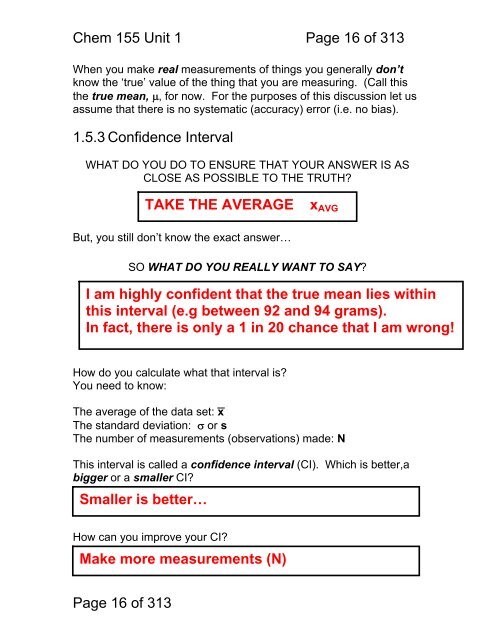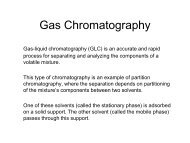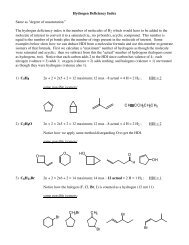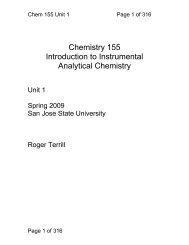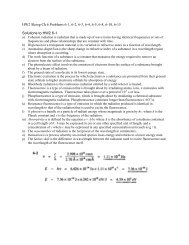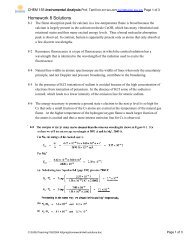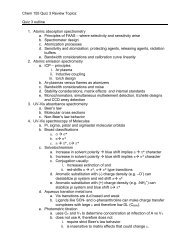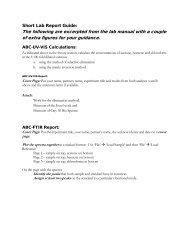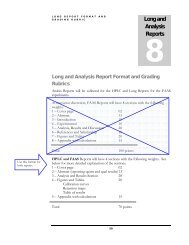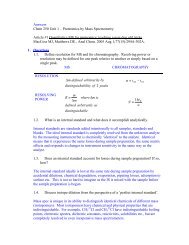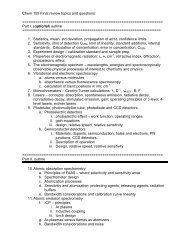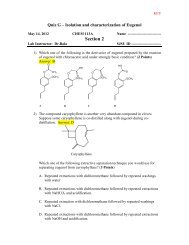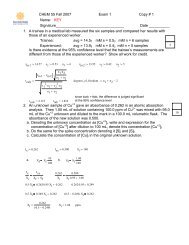Chemistry 155 Introduction to Instrumental Analytical Chemistry
Chemistry 155 Introduction to Instrumental Analytical Chemistry
Chemistry 155 Introduction to Instrumental Analytical Chemistry
Create successful ePaper yourself
Turn your PDF publications into a flip-book with our unique Google optimized e-Paper software.
Chem <strong>155</strong> Unit 1 Page 16 of 313When you make real measurements of things you generally don’tknow the ‘true’ value of the thing that you are measuring. (Call thisthe true mean, μ, for now. For the purposes of this discussion let usassume that there is no systematic (accuracy) error (i.e. no bias).1.5.3 Confidence IntervalWHAT DO YOU DO TO ENSURE THAT YOUR ANSWER IS ASCLOSE AS POSSIBLE TO THE TRUTH?TAKE THE AVERAGEx AVGBut, you still don’t know the exact answer…SO WHAT DO YOU REALLY WANT TO SAY?I am highly confident that the true mean lies withinthis interval (e.g between 92 and 94 grams).In fact, there is only a 1 in 20 chance that I am wrong!How do you calculate what that interval is?You need <strong>to</strong> know:The average of the data set: xThe standard deviation: σ or sThe number of measurements (observations) made: NThis interval is called a confidence interval (CI). Which is better,abigger or a smaller CI?Smaller is better…How can you improve your CI?Make more measurements (N)Page 16 of 313


